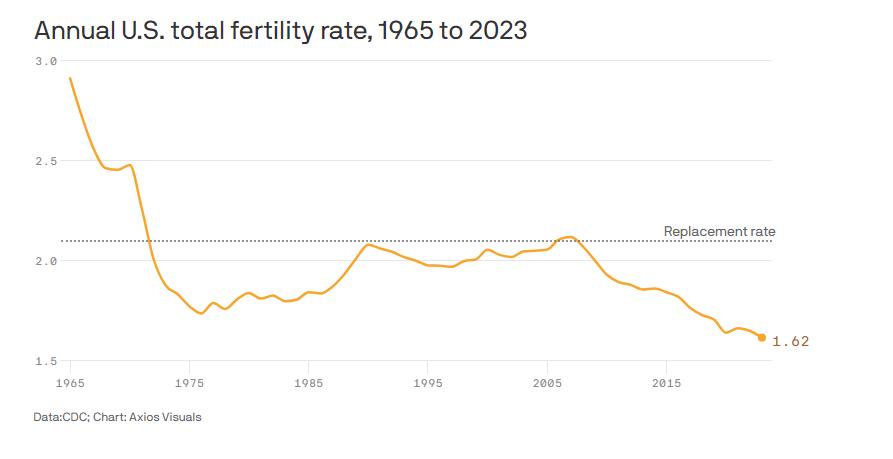
The United States is experiencing a profound shift in its demographic landscape as birth rates plummet to historic lows. According to provisional data from the Centers for Disease Control and Prevention (CDC), the total fertility rate (TFR) for 2023 dropped to 1,616.5 births per 1,000 women—a 2% decline from the previous year. This marks the steepest annual drop in recent years, as the rate had seen less than a 1% decline from 2021 to 2022, following a brief increase from 2020 to 2021. The consistent decline from 2014 through 2020 is now back in full force, raising concerns about the nation’s future.
The general fertility rate, which measures births per 1,000 females aged 15–44, also fell by 3% in 2023, reaching 54.5 births per 1,000 females. This decrease continues a downward trend from 56.0 in 2022 and 56.3 in 2021, signaling a broader pattern of declining fertility across the nation. Notably, birth rates have dropped across multiple age groups, with the most significant decline among teenagers aged 15–19, whose birth rate fell by 3% to 13.2 births per 1,000 females in 2023.
Even as birth rates decline, other factors are shifting in the opposite direction. The cesarean delivery rate ticked up slightly to 32.4% in 2023, accompanied by an increase in the low-risk cesarean delivery rate. Meanwhile, the preterm birth rate held steady at 10.41%, offering a rare point of stability amid the broader trends.
The reasons behind these declining birth rates are complex and multifaceted, involving a web of social, economic, and health-related factors. The CDC’s report provides a stark look at the numbers but stops short of explaining the underlying causes. What is clear, however, is that the United States is at a critical juncture. As fertility rates continue to fall, the nation faces growing uncertainty about its demographic future, with potential long-term implications for everything from economic growth to social services.
In a time of rapid change and growing challenges, the historic low in the U.S. fertility rate is a sobering reminder of the forces reshaping American society. The decline in birth rates is more than just a statistic—it’s a reflection of deeper issues that will require thoughtful analysis and action to address.
Sources:
https://www.cdc.gov/nchs/data/vsrr/vsrr035.pdf
https://www.cdc.gov/nchs/products/databriefs/db507.htm
https://www.axios.com/2024/04/25/us-births-drop-2023